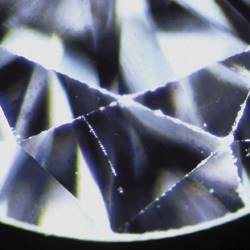|
News

Inaccurate assessments of jewellery place retailers who do repairs in a dangerous situation
Sued jeweller serves as warning
 3.8 k views | Posted May 24, 2010 3.8 k views | Posted May 24, 2010 |
A recent civil lawsuit – against an innocent jeweller – provides a valuable lesson for all jewellers.
A lengthy legal dispute involving a Victorian jeweller accused of switching a diamond in a customer’s ring during a repair, was recenty settled.
The jeweller – who wished to remain anonymous – denied any wrongdoing, however his situation was hampered by a number of factors, including differing diamond gradings obtained by the customer.
The case brings attention to the risks taken by jewellers who make repairs, leaving themselves vulnerable to inaccurate diamond gradings and misunderstandings with customers with little or no knowledge about diamond gradings.
The hearing took place in early May before the Victorian Civil and Administrative Tribunal (VCAT), however the dispute dates back to 2005.
The diamond was first assessed – unmounted – in 1997, and the diameter and weight recorded.
In 2005 the diamond ring was taken to the jeweller for a bezel repair. The jeweller remade the bezel and set the diamond slightly higher.
Upon its return the customer accused the jeweller of switching the diamond, claiming the stone was not as deep and a lower color grade.
In subsequent years, the customer had a number of valuations performed by different diamond graders - both qualified and unqualified. The valuations – performed with the stone mounted in the ring – varied greatly, adding to the confusion.
Monica Crofts, president of the National Council of Jewellery Valuers (NCJV) Victorian branch, later examined the valuations.
She explained that there were two reasons why the assessments were inaccurate:
- It’s impossible to perform an accurate grading of a mounted stone
- Some of the assessments were performed by unqualified diamond graders.
A final assessment of the stone – now unset from the ring – showed the diamond to be the exact diameter and weight as the original record completed in 1997, thereby proving that it was the same stone.
This information convinced VCAT that the stone had not been switched, and the case was dismissed, although it took nearly five years for the matter to be finalised.
Crofts was present at the hearing, testifying as an expert witness and she said the case should serve as a warning to all jewellers undertaking customer repairs.
“Had the original details not been documented, it may have just been a question of whom VCAT believed to be the most truthful,” she said.
Crofts suggested a number of measures jewellers can take to avoid a similar case.
“Wherever possible remove the major stone in front of the client, and weigh all stones in front of the client. An investment in a set of carat scales is most important for any jeweller,” Crofts said.
“If possible send the client to your valuer to have them recorded and graded before resetting, then have the item valued independently by the same valuer, who can reassure the client that everything is correct.
“And make it known to prospective customers the limitations of grading mounted diamonds, as the lack of this knowledge can have serious repercussions,” Crofts added.
Crofts said the judge made the correct decision, describing the jeweller as “an honourable man”.
More reading: When
diamond gradings collide
Have "Your say": Login and add a comment below
|
|
|
|